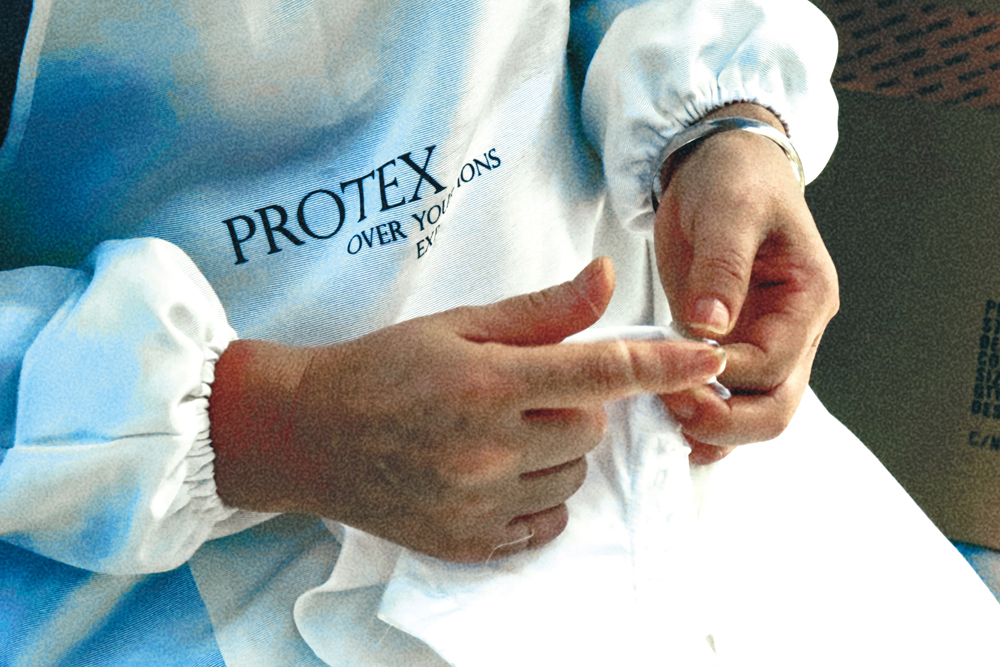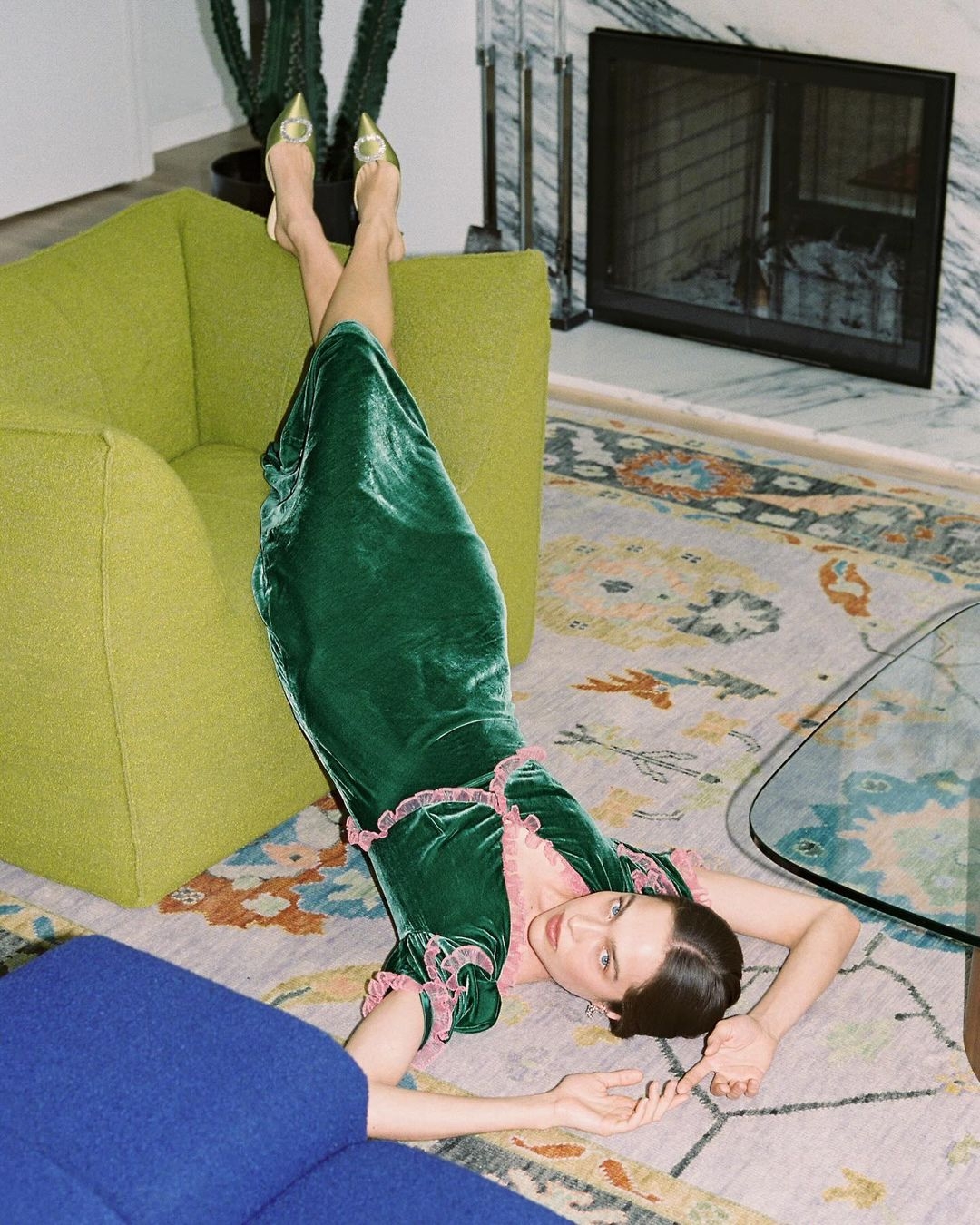Let’s talk about common problems in clothing production. Let me recall the previous conversation. Earlier, they asked about common problems for clothes in general, and I listed issues like wear and tear, fading, pilling, etc. Now they’re specifically asking about production problems. So I need to shift focus from consumer issues to manufacturing challenges.
First, I should consider the different stages of production. Sourcing materials, manufacturing processes, quality control, sustainability, labor, and cost management come to mind. Let me break it down.
Material-related issues: Defects in fabrics like uneven dyeing or shrinkage. Maybe inconsistency in fabric quality from suppliers. Also, sourcing sustainable materials could be a problem, especially with the push for eco-friendly practices.
Production process problems: During cutting and sewing, fabric might be misaligned, leading to waste. Stitching defects like skipped stitches or seam puckering. Dyeing and printing issues like color bleeding or uneven patterns.
Quality control challenges: Ensuring consistency across large batches. Detecting defects early to avoid costly recalls or returns. Meeting international standards and regulations, which can vary by region.
Sustainability and ethical concerns: Environmental impact from water usage, chemical dyes, and waste. Ethical issues like fair wages and safe working conditions in factories. Compliance with labor laws can be tricky, especially in different countries.
Cost and efficiency: Balancing quality with cost-effectiveness. Managing production timelines to avoid delays. Dealing with rising raw material costs, especially with natural fibers or specialized fabrics.
Supply chain management: Reliable sourcing of materials, avoiding delays. Inventory management to prevent overproduction or stockouts. Transportation and logistics issues affecting delivery times.
Technological integration: Adopting new technologies like automation or AI in production. Training workers to use advanced machinery. Ensuring technology doesn’t compromise craftsmanship, especially in high-end fashion.
Design and prototyping: Translating designs into manufacturable products. Prototyping costs and time. Adjusting designs based on material limitations or production capabilities.
Regulatory compliance: Meeting safety standards, like flame resistance for children’s sleepwear. Proper labeling requirements, including care instructions and fiber content. Import/export regulations affecting global supply chains.
Waste management: Dealing with fabric scraps and production waste. Recycling or upcycling materials to minimize environmental impact. Disposal of hazardous materials like chemical dyes.
Labor shortages and skill gaps: Finding skilled workers for specialized tasks like pattern making or tailoring. Training employees in new techniques or technologies. High turnover rates in manufacturing sectors.
Intellectual property issues: Counterfeiting and design theft, especially in fast fashion. Protecting original designs and trademarks in global markets.
Consumer demands and fast fashion: Pressure to produce quickly and cheaply, leading to quality compromises. Adapting to rapidly changing trends while maintaining production efficiency. Managing returns and overstock from unpredictable demand.
Cultural and ethical considerations: Ensuring culturally sensitive designs, avoiding appropriation. Ethical sourcing of materials, like avoiding conflict minerals or unethical labor practices.
Okay, I need to organize these points into categories. Let me group them under material challenges, production process issues, quality control, sustainability, labor, supply chain, costs, technology, design, regulations, waste, labor skills, IP, consumer pressures, and cultural aspects. Make sure to highlight the most common and critical problems first. Also, since the user might be involved in the industry, maybe looking for solutions or understanding pain points. Should I mention solutions briefly like in the previous answer? The user didn’t ask for solutions, but maybe a tip for each problem as before. Let me check the previous response structure. Yes, the assistant provided tips for each issue. So I should follow a similar format: issue, cause, tip. That would be helpful.
Wait, the user’s previous question was about problems when producing clothes, so it’s about manufacturing, not post-purchase. So the answer should focus on the production phase. Need to make sure the points are relevant to manufacturing challenges, not usage. Avoid overlapping with the previous answer which was about clothes after production.
For example, material defects, labor issues, supply chain problems, etc. Also, sustainability is a big one now. Fast fashion’s environmental impact. Maybe include things like water usage, chemical pollution, textile waste. Ethical labor practices, fair wages, working conditions.
Also, technological challenges like integrating automation without losing quality. Quality control is a major issue, especially with fast fashion where speed can compromise quality. Defects in stitching, sizing inconsistencies, color variations.
Intellectual property is another area, with designs being copied quickly by competitors. Counterfeiting is a problem, especially in global markets.
Supply chain disruptions, like those caused by pandemics or political issues, can affect material availability and production timelines.
Cost management: Balancing cost of materials, labor, and production while maintaining profit margins. Rising costs of raw materials like cotton or synthetic fibers.
So, structuring the answer with each problem, a brief explanation, and a tip. Let me list them:
1. Material Quality Inconsistency: Variations in fabric texture, color, or strength. Tip: Work closely with trusted suppliers and conduct regular quality checks.
2. Dyeing and Printing Defects: Uneven color, bleeding, or misaligned patterns. Tip: Use standardized dyeing processes and test batches before full production.
3. Stitching and Seam Issues: Skipped stitches, broken seams. Tip: Regular maintenance of sewing machines and worker training.
4. Sizing Inaccuracies: Garments not meeting size specifications. Tip: Implement precise pattern grading and quality control measures.
5. Sustainability Challenges: High water usage, chemical waste. Tip: Adopt eco-friendly dyes and water recycling systems.
6. Labor Exploitation and Safety: Poor working conditions, low wages. Tip: Enforce ethical labor certifications (e.g., Fair Trade) and audits.
7. Supply Chain Disruptions: Delays in material delivery. Tip: Diversify suppliers and maintain safety stock.
8. High Production Costs: Rising material and labor expenses. Tip: Optimize production processes and consider automation where possible.
9. Waste Management: Fabric scraps and unsold inventory. Tip: Implement zero-waste cutting techniques and recycling programs.
10. Intellectual Property Theft: Design copying by competitors. Tip: Register designs and use legal protections in key markets.
11. Regulatory Compliance: Meeting safety and labeling standards. Tip: Stay updated on international regulations and conduct compliance training.
12. Technological Integration: Resistance to adopting new tech. Tip: Invest in employee training and phased technology implementation.
13. Fast Fashion Pressures: Demand for rapid turnover leading to quality issues. Tip: Balance speed with quality checks and sustainable practices.
14. Counterfeit Production: Fake products harming brand reputation. Tip: Use anti-counterfeiting technologies like QR codes or blockchain tracking.
15. Cultural Sensitivity: Offensive designs or appropriation. Tip: Engage cultural consultants and conduct market research before launch.
That seems comprehensive. Now, format it similarly to the previous answer, using numbered points with bold headers, issue, and tip. Keep it concise but informative. Ensure each point is a production-phase problem, not post-production. Avoid redundancy with the earlier answer on common clothing problems. Check for clarity and relevance. Make sure tips are actionable. Alright, time to put it all together.
When producing clothes, manufacturers often encounter a range of challenges that impact quality, sustainability, efficiency, and ethics. Here’s a structured overview of common problems and actionable solutions:
1. Material Quality Inconsistency
- Issue: Variations in fabric texture, color, or strength due to poor-quality raw materials or supplier inconsistencies.
- Tip: Partner with certified suppliers, conduct pre-production testing, and enforce strict quality control (QC) checks for incoming materials.
2. Dyeing and Printing Defects
- Issue: Uneven color, bleeding, or misaligned patterns caused by unstable dye formulas or improper techniques.
- Tip: Standardize dyeing processes, test small batches first, and use digital printing for precision.
3. Stitching and Seam Failures
- Issue: Skipped stitches, loose threads, or seam puckering from machine malfunctions or unskilled labor.
- Tip: Regularly maintain sewing equipment, train workers, and implement real-time QC inspections.
4. Sizing Inaccuracies
- Issue: Garments deviating from size charts due to pattern errors or inconsistent grading.
- Tip: Use automated pattern-making software and conduct fit tests on diverse body types.
5. Sustainability Challenges
- Issue: High water/energy use, chemical pollution, and textile waste (e.g., 15% of fabric wasted in cutting).
- Tip: Adopt waterless dyeing, recycled fabrics, and zero-waste cutting techniques. Certify processes (e.g., GOTS, OEKO-TEX).
6. Labor Exploitation
- Issue: Unsafe working conditions, unfair wages, or child labor in unregulated factories.
- Tip: Partner with factories certified by Fair Trade or WRAP, and conduct unannounced audits.
7. Supply Chain Disruptions
- Issue: Delays in raw material delivery or logistics bottlenecks (e.g., geopolitical crises, pandemics).
- Tip: Diversify suppliers, use local sourcing, and maintain buffer inventory for critical materials.
8. High Production Costs
- Issue: Rising costs of labor, materials (e.g., organic cotton), and compliance with regulations.
- Tip: Optimize workflows with lean manufacturing, invest in automation, and negotiate bulk pricing.
9. Waste Management
- Issue: Fabric scraps, unsold inventory, and non-recyclable materials contributing to landfill waste.
- Tip: Donate excess stock, upcycle scraps into new products, and adopt circular economy models.
10. Intellectual Property Theft
- Issue: Fast-fashion brands copying designs without credit or compensation.
- Tip: Register designs/copyrights, use blockchain for provenance tracking, and pursue legal action.
11. Regulatory Compliance
- Issue: Meeting safety standards (e.g., flame-resistant sleepwear) or labeling laws (e.g., fiber content).
- Tip: Hire compliance experts and stay updated on regional regulations (e.g., EU REACH, CPSIA).
12. Technological Resistance
- Issue: Slow adoption of AI, 3D sampling, or automated cutting due to cost or training gaps.
- Tip: Pilot small-scale tech integration and provide upskilling programs for workers.
13. Fast Fashion Pressures
- Issue: Demand for rapid production cycles leading to worker burnout and quality compromises.
- Tip: Balance speed with ethical practices, like H&M’s “Conscious Collection” or Patagonia’s repair programs.
14. Cultural Missteps
- Issue: Offending communities with inappropriate designs (e.g., cultural appropriation).
- Tip: Engage diversity consultants and conduct market research before launching collections.
Key Takeaway:
The apparel industry’s challenges are interconnected, but proactive strategies—like ethical sourcing, tech adoption, and waste reduction—can enhance both profitability and sustainability.
From: Chinese Clothes Manufacturer https://www.protexclothes.com




